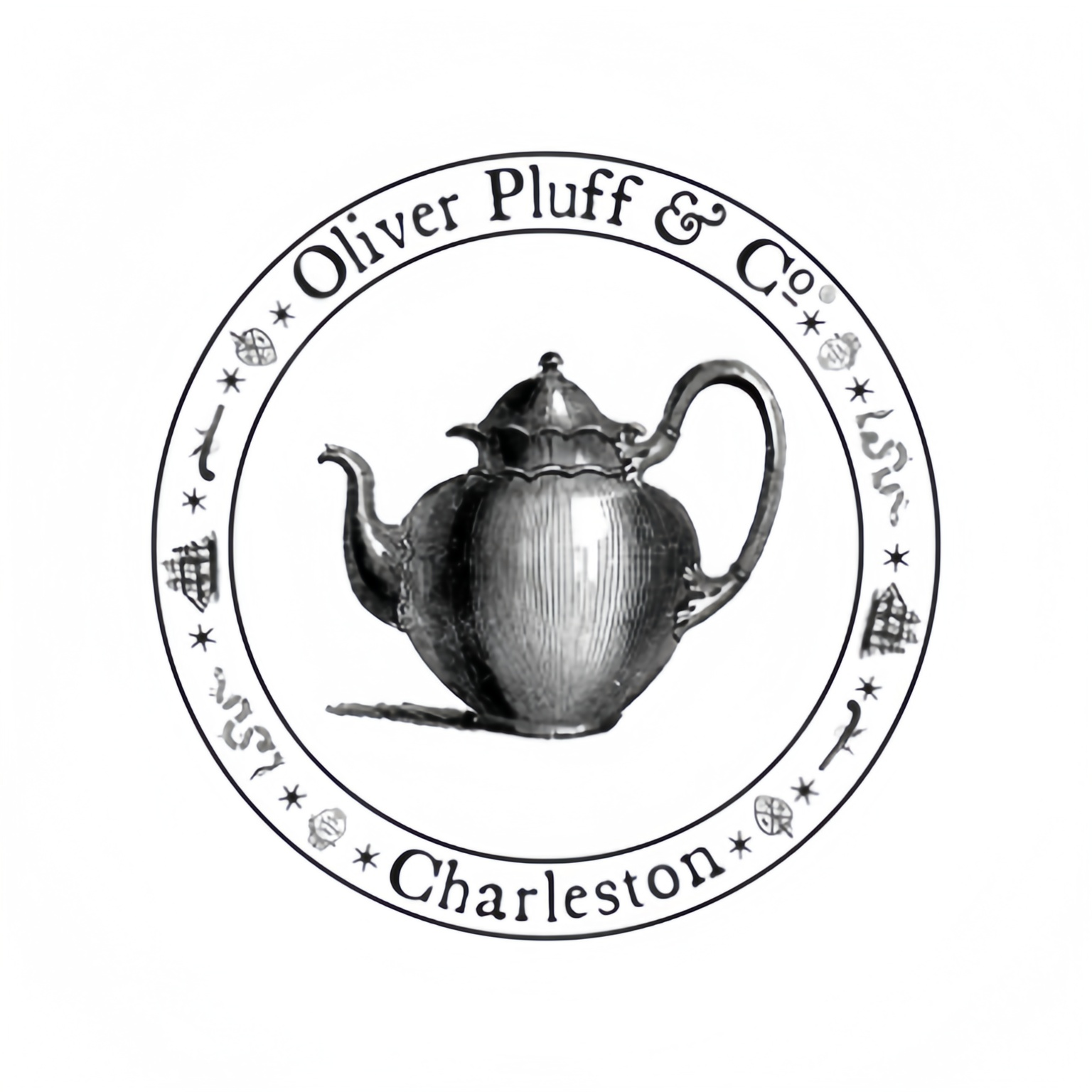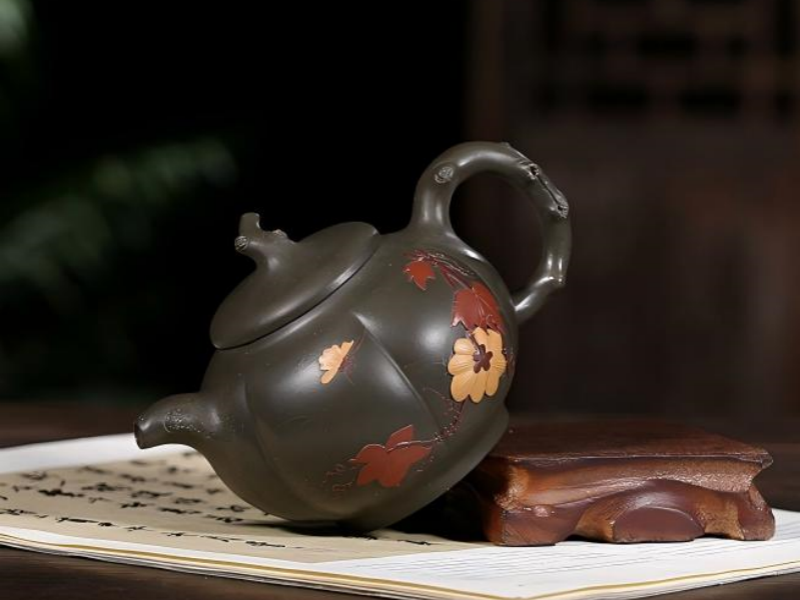Yixing Ware Teapots Brush for the Scholar: The Marrying of Art
Traditional Tea Culture and Modern Applications
The Yixing Ware Teapots Scholar’s Brush epitomize the zenith of traditional Chinese tea culture, linking the centuries-old artisanship and the modern practice of tea appreciation. These teapots are made from the famous Yixing purple clay (zisha), found only in the Yixing region of Jiangsu Province, China. And the Scholar’s Brush model in particular has the smooth, flowing lines reminiscent of the strokes of a calligraphy brush so venerated in classical Chinese scholarship.
Application Scenarios Expansion
Which Industries Are The Product(s) Applicable To?
Tea Houses and Specialty Tea Retailers: Though the Scholar’s Brush teapot can brew throughly and economically, it is also a product in display that projects authenticity and tradition.
Luxury Hospitality: High-end hotels, resorts, and restaurants use these teapots in their tea service to offer guests an authentic cultural experience.
Cultural Education Institutions: Museums, cultural centers, and educational institutions focusing on Asian studies utilize these teapots as educational tools to demonstrate traditional tea ceremonies.
Interior design and home décor: The Scholar’s Brush has an aesthetic value that is often utilized in Asian-inspired or minimalist interior designs as decorative pieces.
Wellness and Mindfulness Categories: The meditative practice of gongfu cha (traditional Chinese tea ceremony), using authentic implements such as the Scholar’s Brush teapot, is being employed in more and more mindfulness programs.
What Common Problems Can Be Solved?
Authenticity: Unlike teapots made in factories, the porosity of the clay used to craft the Scholar’s Brush interacts with the tea to improve the flavour over time. A key problem in the pursuit of authenticity is due to taste profiles.
Temperature Retention: the Yixing clay keeps its temperature incredibly well, maintaining it at an ideal temperature for brewing purposes. The material of the teapot is the organic solution to addressing the common issue of differing thermal properties in the process of .
Durability Concerns: While the glass teapot’s delicate appearance remains, borosilicate glass is used to create these teapots. It’s extremely sturdy and considerably less prone to thermal shock, so it helps to alleviate durability concerns that plague
Sustainablity in Tea: The natural unglazed clay construction negates risk of chemical leaching from glazes or synthetic materials used to make other teapots.
Cultural Disconnect: In this modern, digital age, the Scholar’s Brush teapot offers a physical engagement with tradition-based handcraft and traditional art of mindfulness.
Gift-giving dilemmas: These teapots are a valuable gift option because of their cultural heritage and artistic value and the fact that they appreciate in value, thus solving the dilemma of finding culturally significant gifts.

FAQ
The mineralogy of Yixing clay (zisha) endows it with unique characteristics among ceramic arts. The native ore is abundant in iron oxide, mica, and quartz which undergo confluence during firing into a highly-integrated microstructure filled with ultrafine air bubbles. In brewing, this microporosity facilitates the jade-like Yixing “breathability” (Yixing teapots are said to “breathe” aikana they brew). The celebrated Scholar’s Brush teapot (Hu Bi Luo) takes advantage of this porousness in the zisha body to enhance conversion in the tea. Yixing teapots develop a substantive clouds-and-rain patina with use: tea oils and the Yixing mineral
Seasoning your scholar’s brush: Start by rinsing the new teapot in boiling water for 5-10 minutes. For the first brew, make a strong batch of whatever tea you plan to use most often with the pot, pour to fill the teapot completely, and leave for several hours. Then discard the tea. To clean your teapot, never use soaps or detergents- instead, simply rinse with hot water after each use. After rinsing, air dry your teapot completely before putting away. We recommend using one Scholar’s Brush for one type of tea (for example, one for oolongs, one for pu-erh, etc.), that way, each teapot will be able to develop its own flavour over time. With good care, your teapot will develop an ever more beautiful patina and enhanced brewing properties over decades of use.
While the Scholar’s Brush teapot could be used to brew any tea, it is especially well-suited to some. Medium-sized at roughly 200ml and made of clay, this teapot will do well with oolong teas—darker varieties in particular—as well as aged pu-erh or black teas. Stronger teas like these tend to play off of the properties of the clay to produce great results. The Scholar’s Brush teapot is less suited to green tea or delicate white teas, as these teas are less well-suited to the stronger flavors allowed by brewing vessels such as these in comparison to low-temperature glass or porcelain. As this highly porous clay absorbs the essences of the teas brewed in it, you will find greater success over time by using it exclusively on one family of tea.
According to Authentic Scholar’s Brush, authentic Yixing ware can be identified by a few characteristics Authentic Scholar’s Brush teapots include the following signs of authenticity: each teapot is hand-signed by the master potter, with a seal impression printed on the bottom of the teapot or inside the teapot lid; the clay has a typical natural sheen, not glossy with artificial shine; when lightly struck, the teapot should create a “friendly, clarion, resonating sound, not a dull thud”; and the cover fits so well, it seems to almost groove in place. Their teapots also come with a certificate of authenticity, so the purchaser knows that the teapot is truly Yixing ware; this certificate includes clay composition, firing temperature, and artist information. A QR code is also provided to link to the artisan’s profile and creation process. Finally, if in need of assistance, Authentic Scholar’s Brush also provides authentication services, through their partnership with the Yixing Ceramic Industry Association.
The Scholar’s Brush is designed to reflect the classical Chinese appreciation of the Four Treasures of the Study (brush, ink, paper and inkstone), the necessary implements of the traditional scholar or calligrapher. The flowing, asymmetric spout of the teapot calls to mind the dynamic movement of a stroke of calligraphy, while the balanced, harmonious profile of the teapot handle evokes the disciplined hand of the scholar. In essence, this design pays homage to the literary tradition of the China, where tea drinking was considered complementary to, and integrated with, the scholar’s path towards an elegant character. In using the Scholar’s Brush teapot, we too can take up some of this cultural space, honouring the tradition of the integration of tea arts and intellectual cultivation that has for centuries been an aspect of Chinese civilisation.
The Scholar’s Brush teapot is ideal for brewing using gongfu cha. This Chinese tea ceremony involves performing multiple short steeps using a relatively high leaf-to-water ratio Method:
1.Prewarm the teapot by filling it with hot water and pouring it out
2.Use 5-7 grams of tea per 200ml capacity
3.Heat water for oolong teas to 90⁰C-95⁰C (194⁰F-203⁰F)
4.Brew teas for 45-60 seconds during the first infusion
5.Gratuallly add 15-30 seconds for each subsequent infusion
6.Make sure to empty the teapot between each infusion to avoid oversteeping
7.Observe how the flavor profiles develop over time during each infusion
The teapots pour perfectly as the pour is neither too quick to big down with an unsure hand, nor too slow to have to wait for long stretches at a time. Its narrow channel filtered and on point pour preserving, by design, the grace one needs in gongfu tea preparation.
While a Scholar’s Brush represents a significant investment relative to most mass-produced teapots, its benefits and value proposition go beyond immediate functionality. Every teapot is handmade by artisans with decades of experience using clay from increasingly rare deposits with strictly regulated harvesting. The teapot’s value appreciates the longer you own and use it because:
• The clay develops an enduring patina unique to the way you brew • The limited production runs ensure scarcity • The reputation of the craftsman builds within the tea community • The sources of Yixing clay become more regulated and limited
A well-maintained Scholar’s Brush teapot often appreciates in value relative to what you paid for it. Unlike many luxury purchases which depreciate immediately, a premium Yixing teapot is both an everyday tool and a tangible investment in Chinese cultural heritage.
With the appropriate amount of care, your Scholar’s Brush teapot will last for generations. Unlike many mass-manufactured ceramics, Yixing teapots are famous for being exceptionally durable and likely to improve over time. Many of the oldest surviving Yixing teapots from the Ming and Qing dynasties continue to show evidence of daily use, and command very high premiums even today. Some of these antiques have been sold at auction for over $100,000. The Scholar’s Brush is fired at about 1180°C (2156°F), resulting in an unusually dense and durable structure that is resistant to thermal shock and physical stress. The natural aging process will also improve the functionality and visual appeal of the teapot, making the Scholar’s Brush more than just a brewing vessel, but also an heirloom investment.

Selection/Comparison Suggestions
If you’re considering investing in a piece of fine Yixing teaware such as the Scholar’s Brush, it can be helpful to understand how it compares to your other options. The following comparison highlights the most important contrasts between the types of teapots we’ve covered to help you better understand your choices.
Comparative Analysis of Fine Teaware Options
| Feature |
Yixing Scholar’s Brush |
Standard Yixing Teapot |
Porcelain Gaiwan |
Glass Teapot |
Japanese Kyusu |
| Material |
Premium Zisha Purple Clay |
Standard Zisha Clay |
Porcelain |
Borosilicate Glass |
Japanese Clay |
| Origin |
Yixing, Jiangsu Province, China (PGI Protected) |
Yixing, China |
Jingdezhen, China |
Various |
Tokoname, Japan |
| Clay Mineral Content |
>40% Mica, >30% Kaolinite |
>30% Mica, >25% Kaolinite |
N/A |
N/A |
>35% Iron Oxide |
| Firing Temperature |
1180°C |
1100-1150°C |
1300°C |
N/A |
1200°C |
| Porosity |
8-12% |
10-15% |
<1% |
0% |
5-8% |
| Thermal Conductivity |
Low (excellent heat retention) |
Low-Medium |
Medium |
High (poor retention) |
Medium |
| Flavor Development |
Exceptional |
Good |
Neutral |
Neutral |
Moderate |
| Price Range |
$180-350 |
$80-200 |
$20-80 |
$30-100 |
$70-180 |
| Lifespan |
Generations (50+ years) |
Decades |
5-10 years |
1-5 years |
Decades |
| Suitable Tea Types |
Oolong, Pu-erh, Black |
Various |
All types |
Green, White, Yellow |
Green, Sencha |
| Cultural Significance |
High (Scholar’s tradition) |
Medium-High |
Medium |
Low |
High (Japanese) |
| Artisan Recognition |
Named master craftsman |
Often anonymous |
Various |
Mass-produced |
Named artisan |
| Investment Potential |
High |
Medium |
Low |
Very Low |
Medium |
Data sources:
- Yixing Purple Clay Teapots PGI Specifications (EU Protected Geographical Indication 2020/C 423/07)
- ISO 7086-1:2019 Ceramic cookware in contact with food
- Jiangsu Provincial Ceramic Industry Association Standards https://www.jspcia.org/standards/yixing-zisha-classification
- International Tea Committee Quality Standards https://www.teacommittee.org/teaware-standards
Which Teapot Is Right for You?
Based on the comparison above, the Scholar’s Brush Yixing teapot is ideal for:
Serious tea drinkers who appreciate the way a dedicated teapot will develop a distinct seasoning and better flavor over time
Collectors who are looking for teaware with cultural significance and investment potential
Practitioners of gongfu cha who value accuracy in their brewing technique
Aficionados of oolongs and pu-erh who will appreciate the clay’s flavor interaction with these teas
Those looking for a connection to the traditional tea culture who appreciate authenticity and craftsmanship
On the other hand, if you mostly drink green or white teas, are just getting into tea culture, or prefer a more flexible vessel in which to brew multiple types of tea, you might be better served by starting with a gaiwan or glass teapot that you are already comfortable using before investing in a specialized piece such as the Scholar’s Brush.
Actual Cases/Customer Stories
The Collector’s Story: Michael Zhang, Tea Antiquarian
Michael Zhang is a third-generation tea collector from San Francisco who purchased his first Scholar’s Brush teapot in 2017. “I had been looking for an authentic vessel to brew my aged Wuyi oolong collection and was looking for something that would stand the test of time,” he says. “At first I was skeptical about the claims of clay memory and enhancement of flavor. But after 6 months of dedicated use, the difference was undeniable.”
Michael now owns three Scholar’s Brush teapots dedicated to different tea varietals, and his original purchase, now with five years of seasoning, was recently appraised at 40% more than he had paid. “Beyond the value of the investment, there’s something deeply satisfying about using a tool that becomes more personal and effective every time you use it.” he says. “The Scholar’s Brush has taken my daily tea ritual from a habit to a practice.”
The Professional Use Case: Mei Lin’s Tea House
Mei Lin purchased six Scholar’s Brush teapots when she opened her boutique tea house in Portland in 2020 as part of her premium tea service. “Just from a presentation point of view it was worth the investment,” she says. “Customers can immediately see the authentic craftsmanship, which builds their trust in us before they’ve even had their first taste of their tea.”
Mei offers a special “Tea Journey” experiential offering for her private clients that allows customers to taste the same oolong tea brewed in three different vessels—a glass, a porcelain, and the Scholar’s Brush Yixing teapot. “Almost everyone identifies the Yixing-brewed tea as having more depth of flavor and a rounder mouthfeel,” she says. “It’s been our most popular educational experience and has turned many casual tea drinkers into dedicated enthusiasts.”
The teapots have held up remarkably well in daily commercial use. “After three years of constant service, they show no signs of wear—only a characterful patina that just gets better with every brewing,” says Mei.

The Cultural Nexus: Professor James Hadley, East Asian Studies
When Professor James Hadley retired, he was gratified to receive a Scholar’s Brush teapot, given by his colleagues in Cornell’s East Asian Studies department. “Having devoted my career to studying the materialo culture f the Chinese literati tradition, I could hardly have been more honored or delighted to be given an artifact that so perfectly encapsulates the scholar’s aesthetic,” he says.
Professor Hadley now uses his Scholar’s Brush teapot in community education classes he runs on the history of Chinese culture. “The teapot, in my classes, is both a teaching tool and a conversation starter. Students can see traditional craftsmanship before their eyes, and gain insight into the ways in which Chinese artisans turned everyday objects into a form of art by paying close attention to material, shape, and function.”
He also points out that the teapot has encouraged students to take a wider interest in Chinese tea culture. “Many students have gone on to study tea more seriously once their curiosity for the tradition has been sparked by this beautiful object. It builds a physical, sensory link to a 2000-year-old cultural practice in a way that textbooks alone can’t.”
The Family Heirloom – The Chen Family Story
When David Chen was organizing a 70th birthday party for his father, he wanted to buy a special gift that would both acknowledge his father’s Chinese heritage, and be something that his father could use regularly. “My father had always used whatever teapot he had to hand, I thought it would be nice to get him something that good connected him to his roots,” says David.
The Scholar’s Brush was an immediate hit, quickly becoming Mr. Chen’s most prized heirloom. “Every few weeks my father calls me to report on how the teapot is ‘developing’, and how much better his tea tastes that month,” laughs David. “He’s actually documented the subtle changes in the appearance of the clay with photos, almost like it’s a living thing.”
Most importantly, the daily tea ritual with the Scholar’s Brush has created a new family ritual. “Nowadays, whenever I visit my parents, making tea with the Scholar’s Brush has become our bonding ritual,” says David. “My father has even decided which of his grandchildren will inherit it along with his tea collection. Something that began as a birthday gift has become a new family heirloom.”
The Corporate Success: International Business Connections
When negotiating a major.
Conclusion
The Yixing Ware Teapots Scholar’s Brush is not merely a teapot, but a culmination of hundreds of years of craftsmanship, tradition and art. By owning this teapot, you will have an object that you will treasure for the rest of your life in a way that very few things offer in the modern day, whether you are in pursuit of an ancient way to brew a better cup of tea, investing in timeless art or simply desire a connection to tradition through a cultural artefact.
By taking care of your Scholar’s Brush properly, they will serve your tea needs not only for decades, but will develop their own unique character to reflect your own personal tea journey. The Scholar’s Brush is a living artifact, always improving with each and every use; taking your story forward, to share with the future generations who inherit it.
























Mason Phillips –
The breathable clay works! Tea tastes fresh and develops complex, subtle flavors I had never noticed.
Zahra Said –
Great customer service when I had queries regarding the product. It arrived safely packaged from California to Vancouver.
Ruby Choi –
Smaller than I was expecting but that works actually better for single servings. Works great in my home office.
Devon Carter –
This teapot has changed my evening wind-down routine. Such a soothing, zenlike activity now.
Anjali Mehta –
Quality construction throughout. Everything’s as it should be. No chips or cracks after 6 months of daily use.